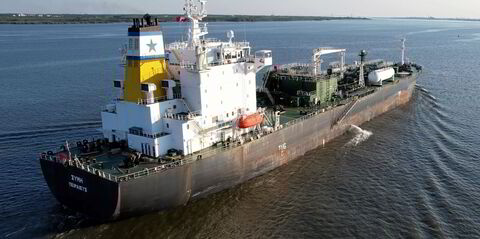As I drove along a winding highway that follows the Aconcagua River in central Chile last week, I looked at the Andes towering over the valley and wondered: “Isn’t there supposed to be some snow?”
Although the climate is fairly arid, even at the height of the southern hemisphere summer I expected a few patches of snowfall on these mountains near the tallest peak in the Americas.
Looking into my suspicions, I learned that parts of this valley have been declared disaster areas as a result of a prolonged drought.
Maybe the painful dry spell in itself cannot be conclusively tied to climate change, but it is at least a taste of what could come as a result.
A January 2017 report by Chile's environment ministry found that this region of the country will be hardest hit by rising global temperatures and changes in weather patterns expected beyond 2050, with a reduction in the snowpack in the Andes, in precipitation and in the amount of water flowing in the Aconcagua River.

If the report is correct, climate change will have a heavy impact on the lives of people in this region, which is a major wine valley. The affect is expected to be more severe in other parts of the world.
There are the signs that shipping's carbon footprint is poised to change dramatically, but these impacts are a reminder of how important it is that strong action is taken.
It is in this dry valley in the shadow of the Andes that I read a story by my colleague Adam Corbett, which appears in this week’s TradeWinds, on DNV GL’s forecast for changes in shipping industry energy use up to and beyond 2050.
The Norwegian classification society projects a trend away from oil-based fossil fuels such as marine gas oil and heavy fuel oil, which are expected to make up just 47% of shipping’s overall energy consumption.
Instead, 32% of the world fleet’s power will come from LNG and 18% from biofuels, combining deepsea and shortsea fleets. Another 3% will come from electricity, although none of the ocean-going fleet will be powered this way.
Improved efficiency of the shipping fleet will further reduce the industry’s environmental footprint.
This is a major — perhaps revolutionary — change in the way ships are powered.
But, driven by global regulations that will drastically limit emissions of sulphur oxides (SOx) and nitrogen oxides (NOx), the impact on greenhouse gas emissions may be less significant without additional measures.
Fuelling debate
LNG, an alternative fuel that is expected to be widely adopted, releases carbon emissions that are lower than petroleum-based fuels when used as a source of power. But its main component is methane, which is a far more potent greenhouse gas than CO2 when it escapes along the supply chain. Estimates vary about how much methane is released on its journey from well to engine but it is a reminder that LNG is very much a fossil fuel.
Shipping recognises the need to tackle greenhouse gas emissions, as the IMO sees it as its next major goal. Claiming they are committed to reducing greenhouse gas emissions, industry associations are proposing that the IMO adopts goals to bring shipping's CO2 emissions below 2008 levels, with an as-yet-decided target in 2050.
But they do not want new binding regulations. Rather, the groups insist on aspirational objectives.
This could not possibly be enough and it stretches the definition of commitment. I can only imagine what my wife would say if I had told her many years ago that the commitment I was seeking was a non-binding, aspirational objective.
Let's also not forget how the industry got to the point that DNV GL could forecast such steep declines in the use of petroleum-based fossil fuels. It was not by the shipping industry's own drive to reduce its carbon footprint, but the fuel changes driven by NOx and SOx regulations that pushed shipowners in this direction.
Proposing goals without binding requirements smacks of commitment to the status quo, even of pre-writing the future self-congratulatory press release claiming that the gains cemented by the regulations aimed at reducing NOx and SOx emissions are instead a shipping industry initiative to tackle carbon emissions.
Faced with the real human impact of climate change, shipping is presented with the opportunity to play a constructive role in writing rules that could make an even more meaningful impact on greenhouse gas emissions — rules that level the playing field in favour of positive change and that do more than hitch a ride on the existing path of regulation-driven change.
If this happens, I will be happy to toast the effort with a glass of wine from the Aconcagua Valley.




